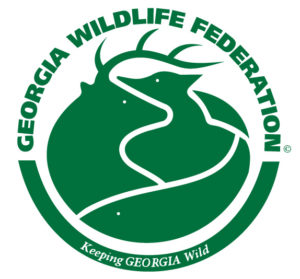Best Recommendations to Minimize the Impact on Wildlife and Habitat Now Available
 Covington, GA – Georgia Wildlife Federation (GWF) is part of a collaborative effort to make large-scale solar utility projects in Georgia more wildlife-friendly.
Covington, GA – Georgia Wildlife Federation (GWF) is part of a collaborative effort to make large-scale solar utility projects in Georgia more wildlife-friendly.
When it comes to solar energy, emphasis is often placed on its benefit as a renewable energy solution and strategy to reduce climate change. Those determining where to locate large-scale projects generally only consider technology, infrastructure, and narrowly defined economic factors. The result is thousands of acres of forests and fields essentially paved over with little to no evaluation of the impact these installations have on our wildlife and natural resources. This has the conservation community very concerned.
According to the Solar Energy Industry Association (SEIA), Georgia is ranked 7th in the nation for total installed solar capacity. Georgia Power reports that approximately 45,000 acres of utility-scale solar construction is already planned and approved for the next 7-8 years. Knowing this, Georgia Wildlife Federation is organizing a working group to proactively address potential harms to Georgia’s wildlife and habitats before development gets out of hand. Key players include the US Fish & Wildlife Service, Georgia Department of Natural Resources – Wildlife Resources & Environmental Protection Divisions, The Nature Conservancy, Georgia Conservancy, Georgia Power Company, Green Power EMC, National Wild Turkey Federation, The Orianne Society, Quail Forever, Tall Timbers Research Station and Land Conservancy, and The Turner Foundation.
As a result of the group’s efforts, “Recommended Practices for the Responsible Siting and Design of Solar Development in Georgia” is now available to advise present and potential independent power producers seeking to implement large-scale solar projects in the state. The group hopes that the set of voluntary recommendations will enable Georgia to reap the benefits of solar energy with minimal impacts on our state’s wildlife and habitats.
“All of the folks that participated in this working group are pro-solar,” says Mike Worley, President and CEO of GWF. “We all recognize that solar is one potential solution to some of the climate challenges we are facing. However, there are very concerning conflicts with wildlife like the gopher tortoise and indigo snake, and real issues to address with soil erosion and sedimentation. We’re hoping the recommendations will encourage developers to address potential conflicts before they become a problem.”
Ongoing feedback from all stakeholders and partners is welcomed and encouraged as the document is intended to be reviewed and updated every six months. Access to the recommendations and other resources, as well as a training webinar and presentation, are available at https://georgiawildlife.com/environmental-review#solar.
Link to .pdf: https://gwf.org/wp-content/uploads/2023/10/SolarSitingFinalOct312023.pdf
# # #
About Georgia Wildlife Federation
Georgia Wildlife Federation was founded as a sportsman’s organization in 1936 and is Georgia’s oldest conservation organization. Today, members include hunters, anglers, bird watchers, hikers, educators, and all Georgians who are interested in preserving our natural resources and outdoor heritage.

Recent Comments